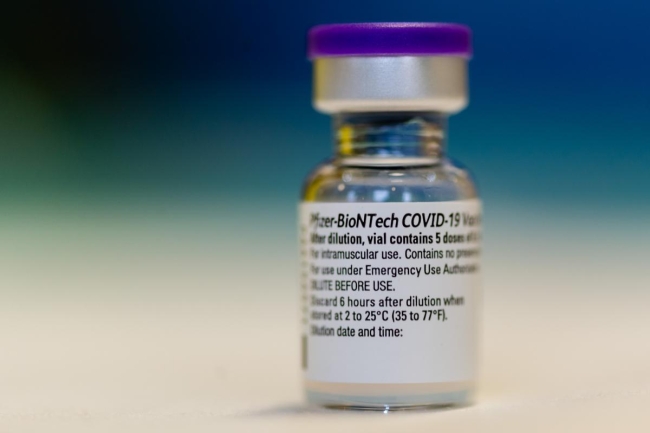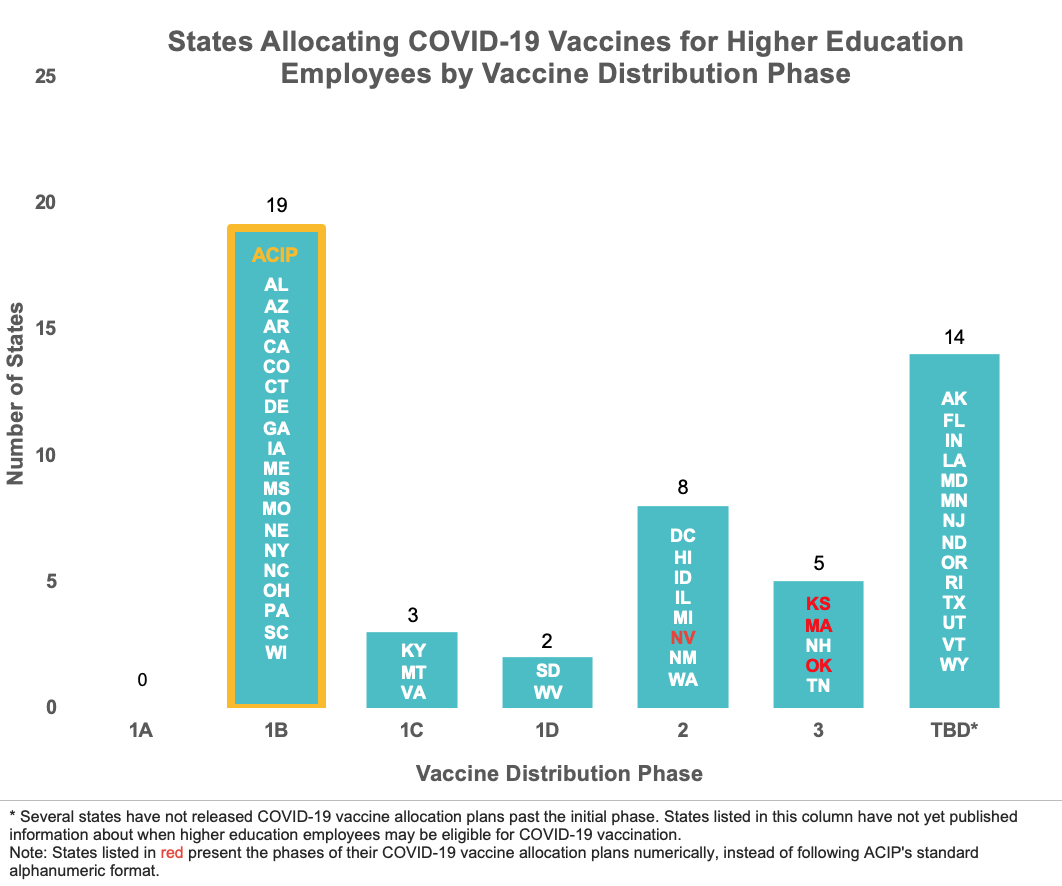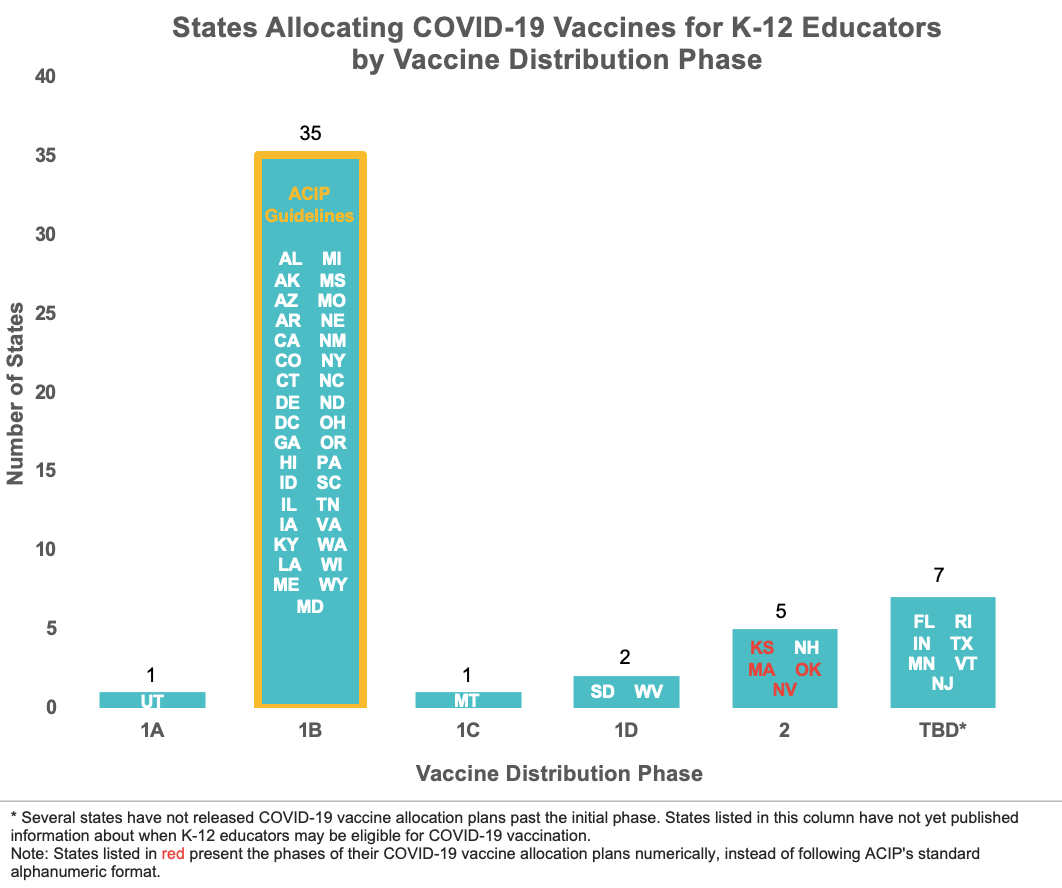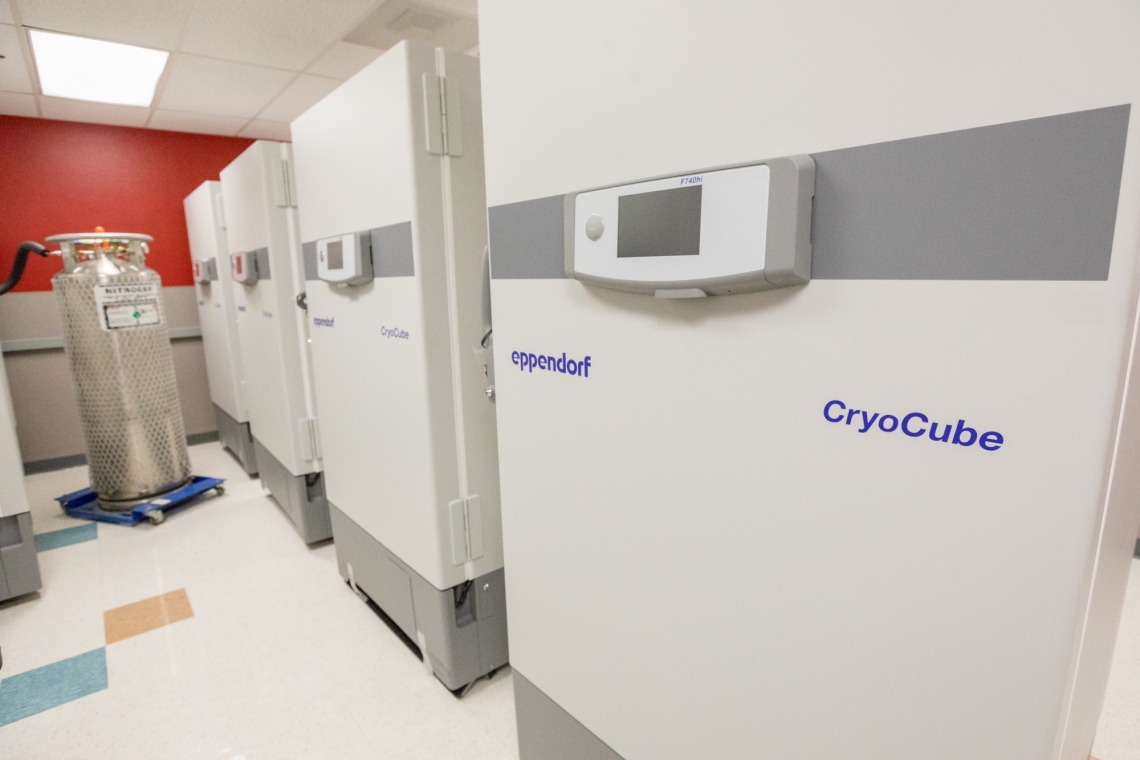You have /5 articles left.
Sign up for a free account or log in.

Marco Mantovani/Getty Images News/Getty Images
Public colleges in West Virginia and Florida are among the first in the country to begin administering the coveted COVID-19 vaccines to certain faculty and staff who do not work in health care.
The University System of West Virginia began administering COVID-19 vaccines to faculty and staff age 50 or over late last month. In Florida, where individuals age 65 or older are eligible for the vaccine, the University of Florida has been administering them to faculty and staff aged 65 or over since last week. Florida State University is expected to begin vaccinations for faculty and staff age 65 or over as early as this week.
States are setting their own priorities for distributing the limited quantities of vaccine currently available, although the Centers for Disease Control and Prevention’s Advisory Committee on Immunization Practices (ACIP) has provided recommendations to assist with state-level decision making.
In line with the ACIP’s guidance, the first phase of vaccination has focused mostly on health-care workers -- including workers at academic medical facilities -- and residents of long-term care facilities. But some faculty and staff who are not working in health care-related fields are among the next in line.
ACIP guidelines call for essential workers, including workers in the education sector, to be included in the second phase, Phase 1B. A spokeswoman for the CDC, Kristen Nordlund, confirmed that "college, university and professional school teachers, support staff, and daycare workers are included in 1B."
“That said, sub-categories of essential workers may be prioritized differently in different jurisdictions, depending on local needs,” Nordlund said. “Some jurisdictions may also face local factors that require the addition of industries not included on the CISA [Cybersecurity & Infrastructure Security Agency] essential critical infrastructure list. Jurisdictions have flexibility in weighing local economic and infrastructure needs, ethical considerations, and other equity factors in order to prioritize occupations for resource allocation decisions.”
Some states, such as Arkansas, South Dakota and West Virginia, explicitly include higher education workers at the same priority level as K-12 teachers. Other states, such as Idaho and Michigan, treat the two groups differently.
Researchers at Boston University's Department of Health Law, Policy, and Management have been tracking state policies on vaccine prioritization, including how states have prioritized higher education and K-12 education workers in their distribution plans, in their COVID-19 U.S. State Policy database. For example, they have found that 19 states are including higher education employees in Phase 1B, consistent with ACIP recommendations, while 35 states are including K-12 educators in that category. (Note: This sentence and the associated chart have been updated to reflect a change in the total number of states prioritizing higher education workers for Phase 1B vaccinations. Researchers who provided the numbers identified an error in their original classification of the state of Maryland.)


"As a higher education employee who can work from home, as many of us can, I hope the vaccine will be prioritized for people who face COVID-19 exposure through work, especially essential workers with a lot of exposure to other people, such as people who work at grocery stores," said Julia Raifman, an assistant professor of health law, policy and management at Boston University and creator of the COVID-19 U.S. State Policy database.
"Vaccinating preschool and K-12 teachers will be critical for getting younger kids back to school, which has huge implications for long-term human capital and equity -- and for gender equity across all workplaces, including in higher education," she said.
Raifman added that while many colleges are offering courses entirely online, many others have remained open and "have employees who are exposed to COVID-19, from staff who work in cafeterias and cleaning to faculty members in classrooms. I hope that university employees who do face exposure to COVID-19 through work will have access to vaccination."
"Vaccine prioritization based on exposure at work will also be important for reducing racial and ethnic disparities in COVID-19 deaths," she added. "We see that essential work is shaping enormous racial and ethnic disparities in COVID-19 deaths. Hispanic, Black and American Indian people especially are dying at younger ages, when they are more likely to have children who depend on them."
Ruth R. Faden, founder of the Johns Hopkins University Berman Institute of Bioethics and the Philip Franklin Wagley Professor of Biomedical Ethics at Johns Hopkins, said giving priority to K-12 over higher education workers is the right choice because younger children have more to lose developmentally from being unable to participate in in-person schooling, and because so many children are dependent on school buildings being open for their physical security and to access free meals.
“If they have their social and intellectual development interrupted at critical periods, they could be harmed for the rest of their lives,” said Faden, who co-authored a Dec. 21 blog post looking at how state plans were prioritizing K-12 and university teachers and staff. “Their life trajectories could be sent in a different path. Young adults who are also at risk can be more resilient,” she added.
"In terms of the instructional role of universities, the pedagogical function of universities, it’s suboptimal, it’s extremely burdensome, but we are able to teach from home and get salaries and our students get something," Faden said -- even if it's not the education or experience educators would ideally want them to have.
“We are very unfortunate in the United States that barring some very substantial pieces of bad luck, we will have enough vaccine in this country for everybody within a year,” Faden said. “So we’re not talking about who gets vaccine and who never gets vaccine. We’re talking about who should get vaccine in January versus February versus March versus July. We have to keep perspective here. We have to think about the immediate concerns. The immediate concerns are to stanch the dying and the crippling effects on our most disadvantaged communities."
A task force on equitable vaccine allocation established by the National Academies of Sciences, Engineering, and Medicine singled out K-12 teachers and school staff and childcare workers, but not higher education workers, for prioritization in the second vaccination phase.
A spokesman for the American Federation of Teachers, a labor union that represents educators at the K-12 and higher education levels, said the organization is advocating for college workers who are unable to do their work remotely to be included in Phase 1B of the vaccine rollout. “Colleges and universities should continue distance learning and telework for campus staff who are not essential,” he added.
Colleges in West Virginia, one of the states that treats K-12 teachers and staff and higher education faculty and staff the same way in its vaccine priority plan, began vaccinating faculty and staff age 50 or above the week of Dec. 28.
Jessica Tice, a spokeswoman for the West Virginia Higher Education Policy Commission, said 28 of the state's 43 public and private universities have begun vaccinating faculty and staff. The state's higher education sector has received 2,800 total doses of the vaccine so far.
"Colleges are responsible for following the guidelines for prioritization set by the state," Tice said. Specifically, she said candidates for the vaccine doses have to be 50 years of age or older or working in "a high-risk position such as health sciences faculty or campus security."
Tensions over vaccine distribution are high as the vaccines remain in short supply. The New York Times recently reported that some elite academic medical centers have vaccinated their staff broadly -- including young workers and workers who do not have patient care responsibilities -- even as millions of older Americans and front-line workers wait their turns.
 As vaccine distribution ramps up, colleges will be functioning as hubs for broader vaccine distribution in their communities.
As vaccine distribution ramps up, colleges will be functioning as hubs for broader vaccine distribution in their communities.
The University of Florida's health system, for example, announced last week that it was beginning to schedule vaccine appointments for more than11,000 Alachua County residents age 65 or over who had accessed the UF health system the past year.
Shenandoah University, in Virginia, announced it is partnering with Valley Health and the Lord Fairfax Health District to serve as a mass-vaccination site for its region.
The University of Arizona announced that starting on Jan. 22 it will begin assisting Pima County in vaccinating individuals identified for priority in Phase 1B, a category that includes people 75 and older; education and childcare providers at the K-12 and higher education levels; and individuals working in law enforcement, corrections, firefighting and emergency response.
Meanwhile, the American College Health Association is urging members to advocate for their local and state public health departments to include college health providers in the first phase of distribution, Phase 1A.
“College health centers that are affiliated with medical centers will most likely already be part of the Phase 1a rollout for the medical center,” the association said in a Dec. 22 advocacy document. “However, college health centers that do not have that type of affiliation may need to make a specific request to their state, tribal, territorial, or local health department. We encourage college health professionals to communicate directly with their local public health departments about the health department’s plans to include college health providers in the early rollout of the vaccine in their area.”
Gerri Taylor, co-chair of ACHA’s COVID-19 task force, said that while a few colleges in her home state of Massachusetts had received their own shipments of the vaccine, the vast majority of colleges have not received any allotments. A statewide consortium of student health center directors banded together and sent the state public health department a proposal to vaccinate college health personnel at four sites across the state. Taylor said the health center directors received the needed vaccines within about 48 hours of making the request.
"It was the small schools I was worried about who had a staff of maybe 10 people," Taylor said. "If you have aliquots of 100 -- that’s the way this vaccine comes -- you need to have a goodly number of people, so that’s why we decided to have four sites."
Taylor said vaccine administration dates will be scheduled for college health personnel at the four sites over the next two weeks.
“We’ve recommended that staff be immunized before students return if at all possible,” she said. “That is the ideal.”




